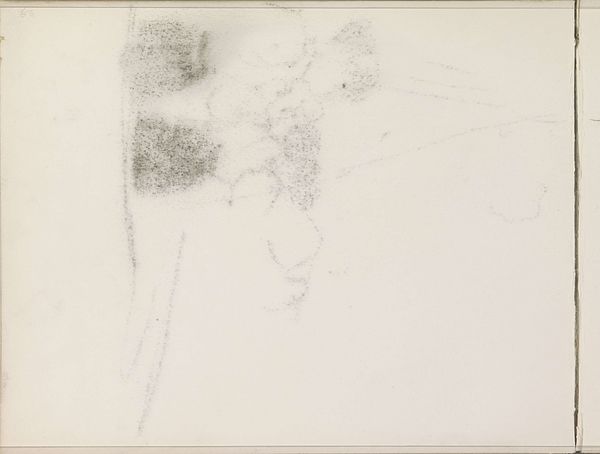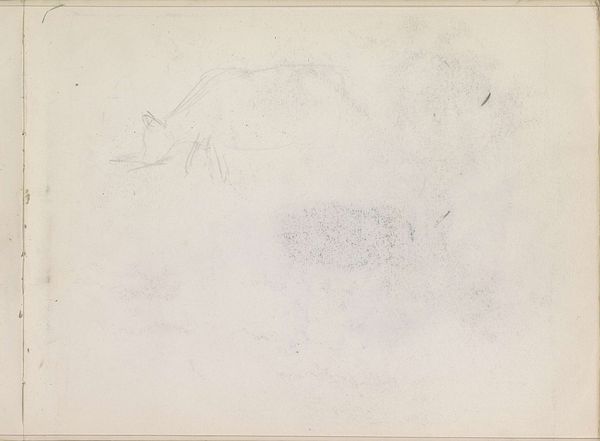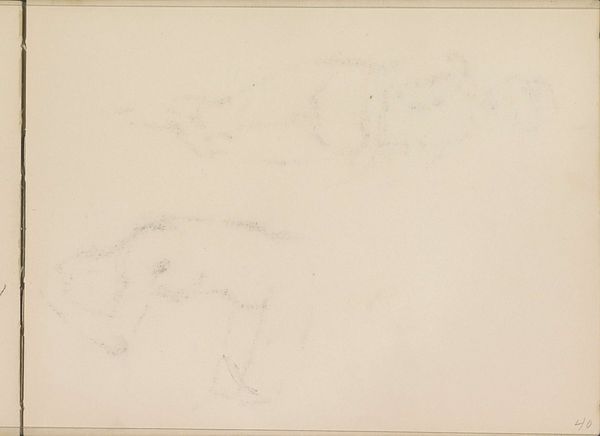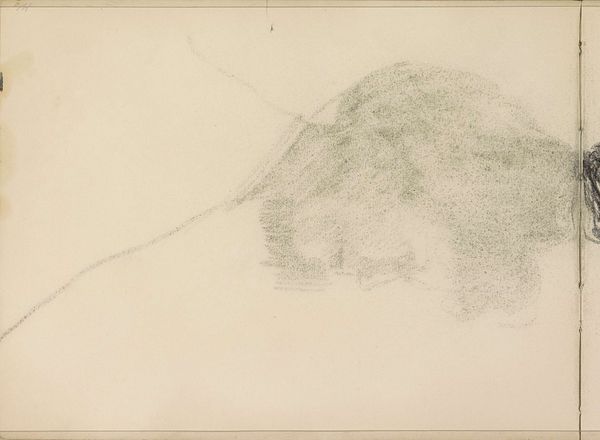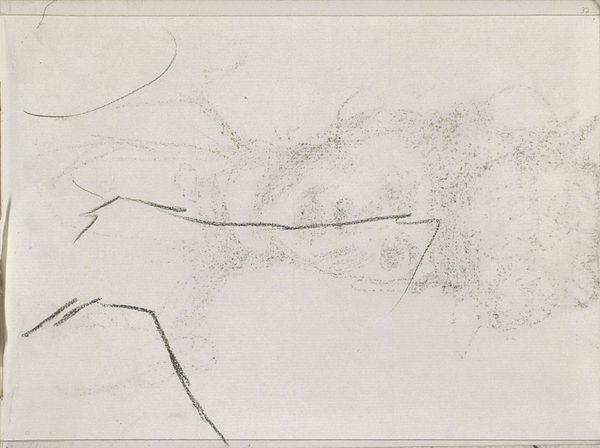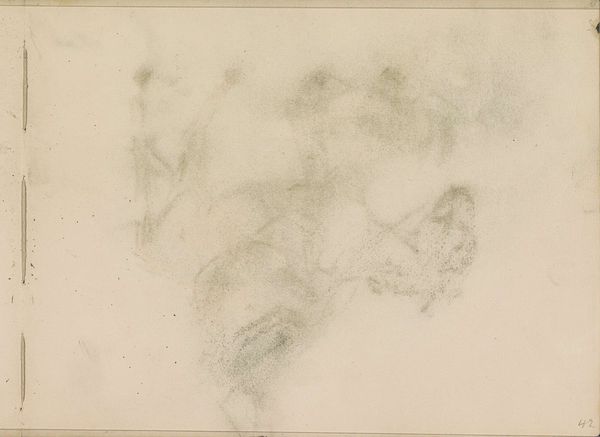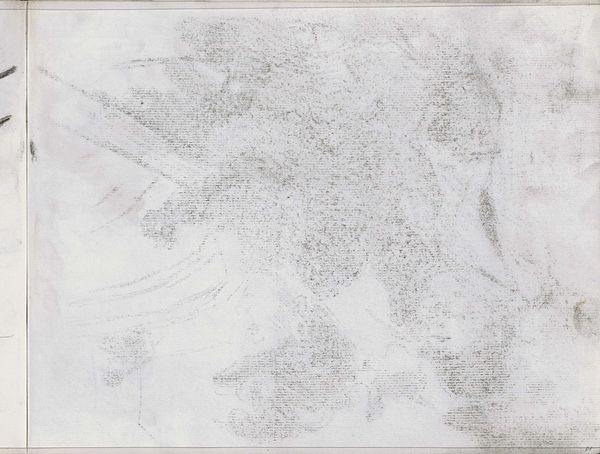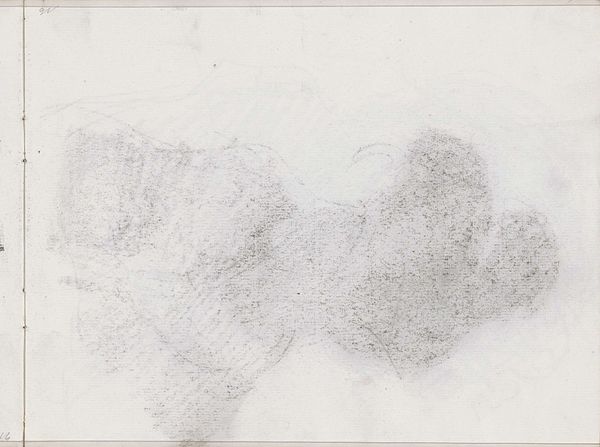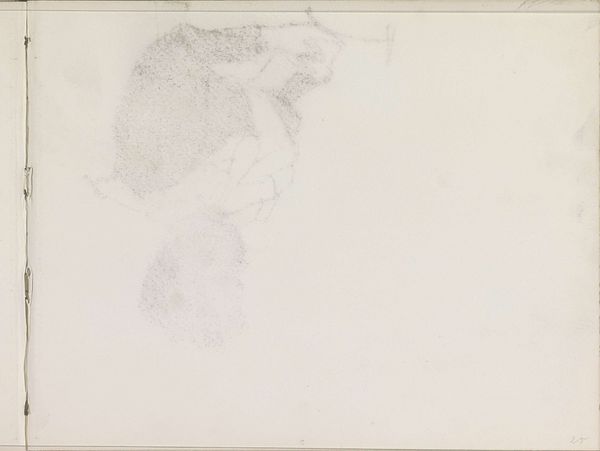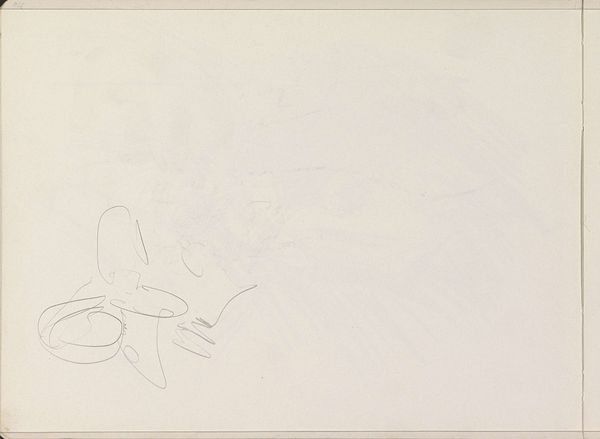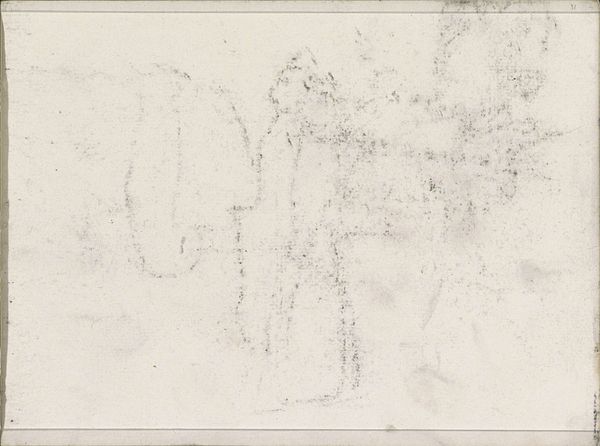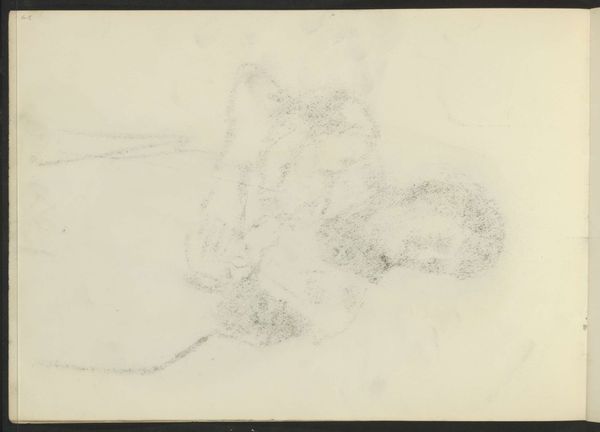
Copyright: Rijks Museum: Open Domain
Curator: We're looking at a work by Isaac Israels, titled "Abklatsch van de krijttekening op blad 2 verso," dating roughly between 1875 and 1934. It's a drawing made with pencil and graphite on paper. Editor: It strikes me as ephemeral. There's a ghostliness to the figure, a deliberate sense of incompletion, existing on the liminal space of the paper itself. Curator: The ethereal quality speaks volumes, doesn't it? Israels worked during a time of rapid social change, and the fragility of the image may mirror the vulnerability and precarity of individuals navigating evolving societal norms, particularly women often depicted by him. Editor: The composition relies on subtle gradations of tone, and the subject emerges organically from the blankness surrounding it. There are only delicate, tentative marks, but the rendering still captures form. Curator: I agree, and considering Israels' oeuvre and his engagement with portraying working-class women and their social positioning within society, this approach evokes notions of impermanence linked to societal structures, specifically regarding gendered experiences of women at that time. Editor: It’s not a polished academic study. It is as if he prioritized the immediacy of the perceptual experience of drawing over descriptive precision. The beauty arises from its provisional nature. Curator: The provisional nature is key, pointing perhaps to the transient nature of social dynamics. It mirrors how social structures and hierarchies, though seemingly fixed, are in a constant state of flux and reformation, with specific ramifications on marginalized groups' sense of place and selfhood. Editor: So much is conveyed through economy of means. We find a mastery of reduction; his sophisticated hand reduces visual data to its fundamental elements. I'm always drawn to that quality. Curator: Precisely, and viewing it within its socio-historical context shows its complexity, because that reduction, that ghostliness, echoes the broader narratives about erasure, historical misrepresentation, and the ongoing struggle of particular figures to gain full visibility. Editor: It really causes one to consider the poetics of visual language. Thank you, the insights you provided deepened my reading considerably. Curator: The intersectional implications present are often overlooked, so I appreciate your insightful attention to the subtleties embedded within form and execution, revealing so much when brought to bear.
Comments
No comments
Be the first to comment and join the conversation on the ultimate creative platform.
